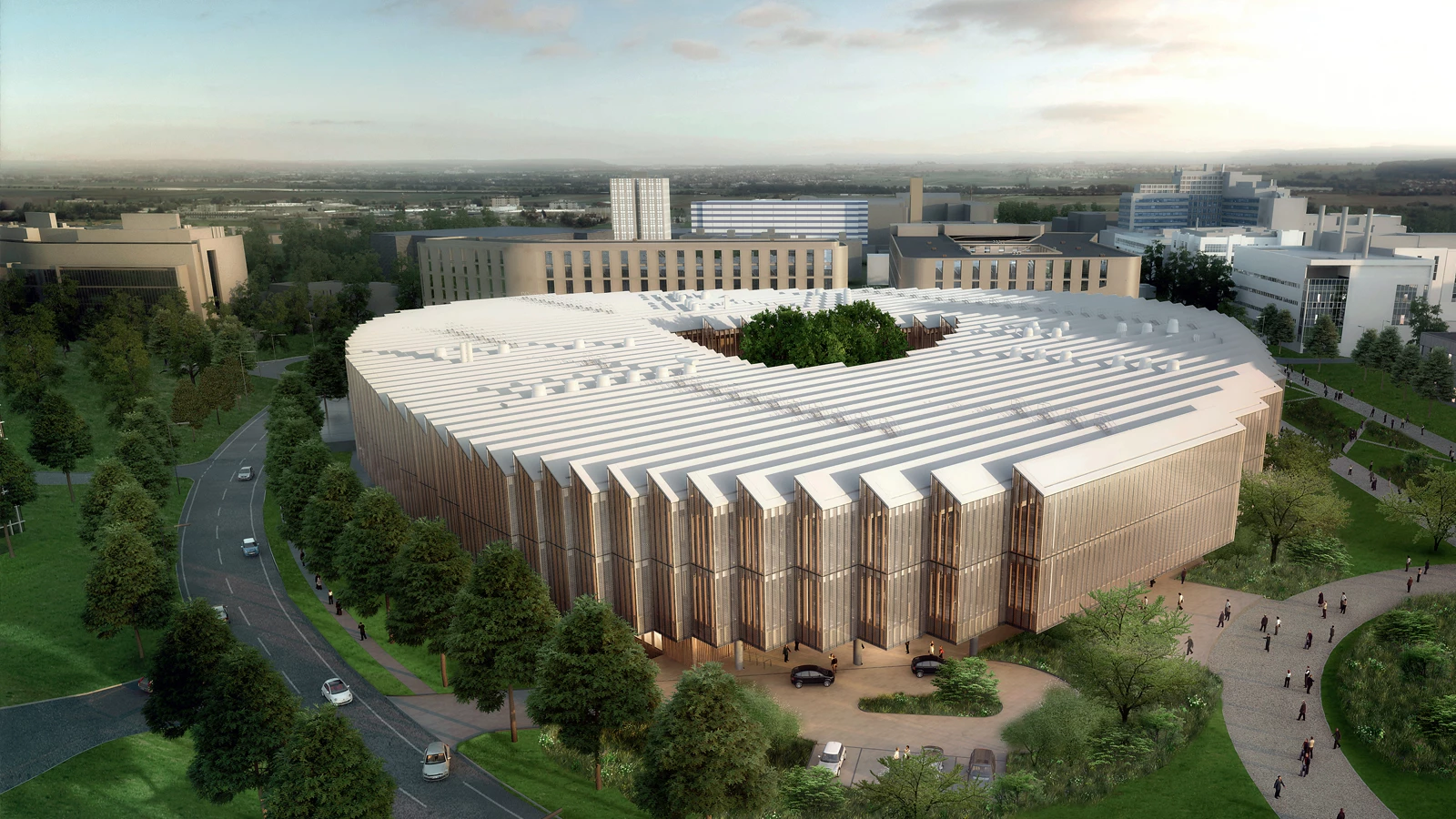AstraZeneca’s Discovery Center in Cambridge (in project)
Herzog & de Meuron- Type Commercial / Office Education Laboratory
- Date 2013
- City Cambridge
- Country United Kingdom
In the middle of the Cambridge Biomedical Campus (CBC) – a future leading center for biomedical development with institutions and companies from the education, health care, science and research sectors –, the biopharmaceutical company AstraZeneca is establishing a new Strategic Research & Development (R&D) Centre and Global Corporate Headquarters (HQ). Its central location reflects AstraZeneca’s ambition to be a key point of exchange and collaboration in the CBC community. The architecture supports this drive and makes it visible with a porous building that is accessible from three different sides and that brings together scientists under one roof.
The proposed building is a triangular glass disc with rounded edges that loosely follows the shape of the site. The volume is defined by a saw-tooth roof that runs East to West to provide optimal light inside, imposing a zig-zag rhythm that extends vertically through the facade. The disc sits on six rectangular glass boxes grouped in three pairs, forming an open courtyard that is a traditional typology element of the Cambridge colleges and serves as a meeting point. The rectangular glass boxes run vertically through all floors and house the main programmatic element of the building, the laboratories. Maximum transparency is promoted across the floor and through the building, making science visible for all staff and visitors. The boxes are surrounded by office space in an open plan layout based in the ‘island desk’ concept, wherein multiple users share single, large tables laid out as a series of islands within the open plan area. The building also offers alternative workplace settings, from private study spaces and quiet booths to informal collaboration or meeting spaces. While the two upper floors of the disc contain offices and working spaces, the underground level hosts support facilities, loading area and plant zone, and the street level, for its part, is open and porous and dedicated to amenities and science on display in the laboratories; all the amenities – conference center, auditorium, café and restaurant – are concentrated on the ground floor with direct access from the main entrance to make them equally accessible for the entire building.
The diversity of materials is kept minimal to make the distinction between the different areas very simple and clear. Floor materials such as stone, solid oak, carpet and white vinyl finish reflect the functional organization of the building. Other materials include glass and exposed concrete.


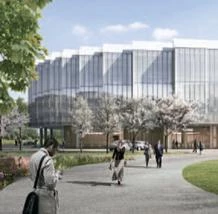

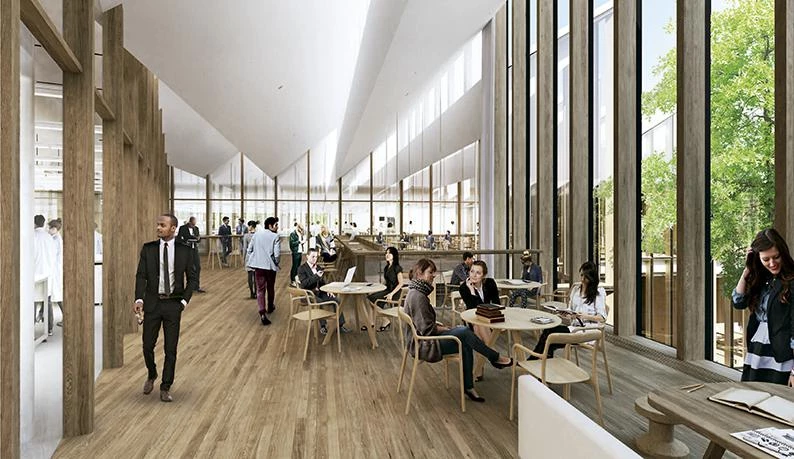
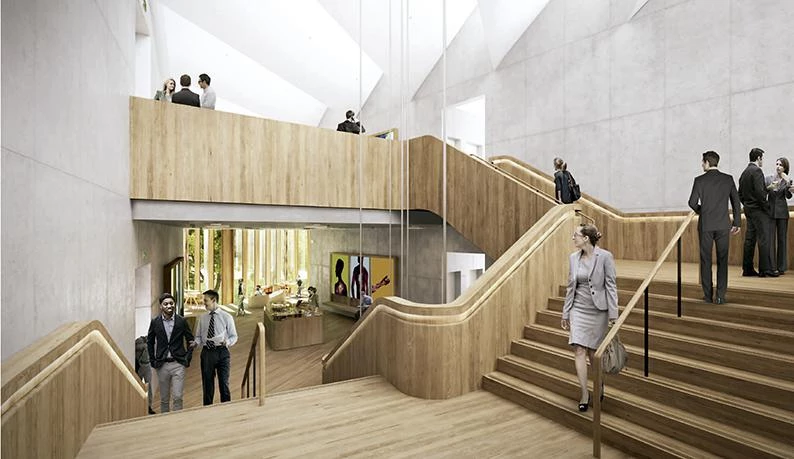
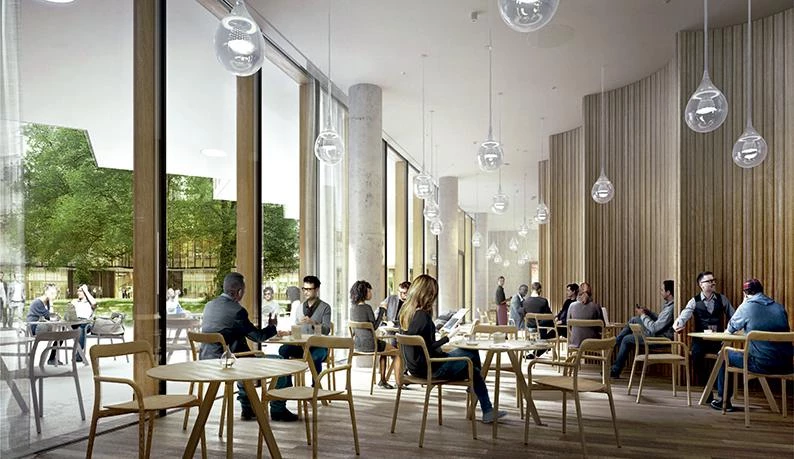


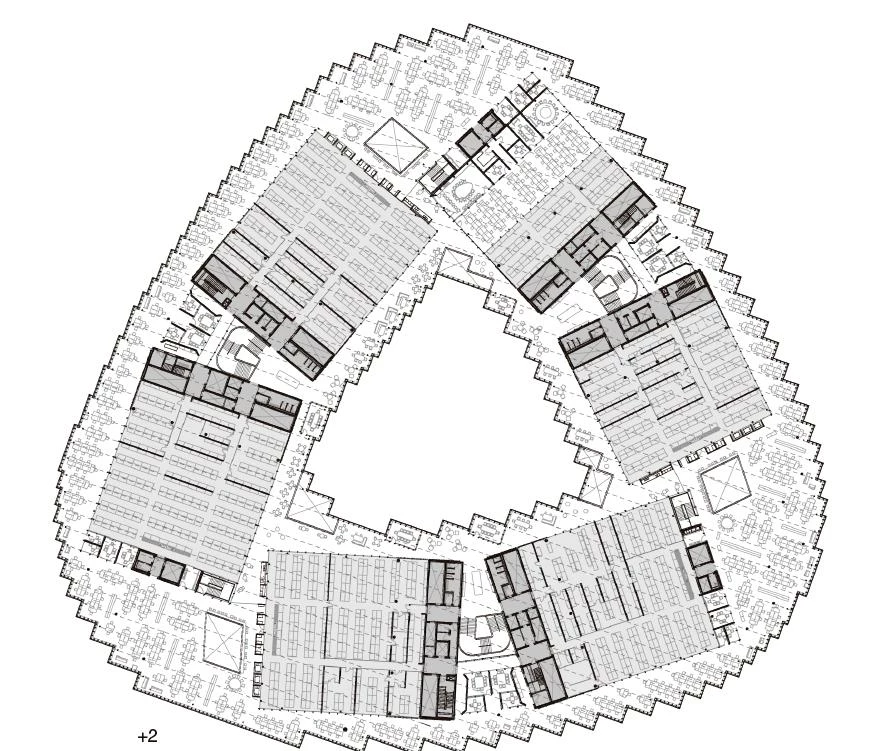



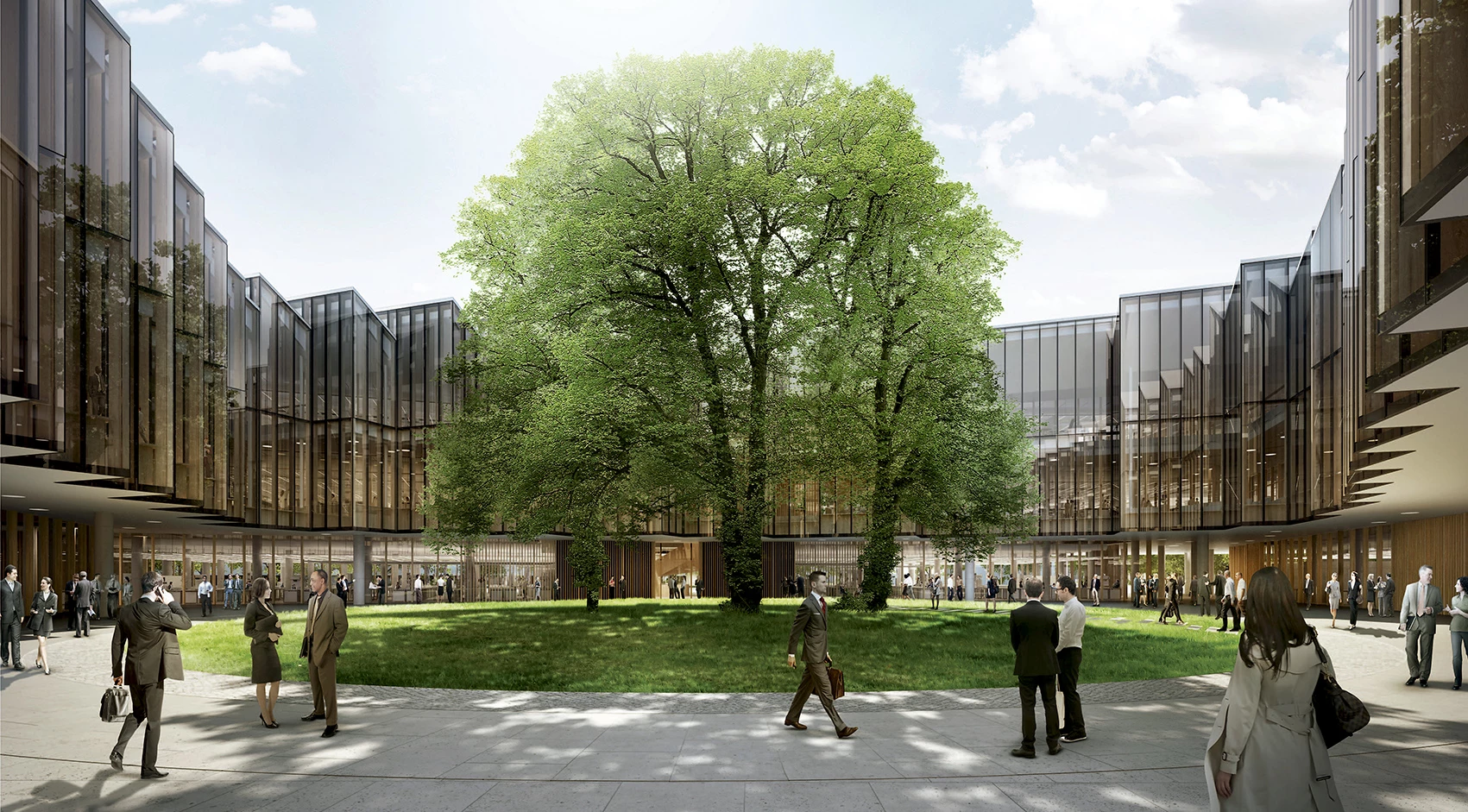
Client
AstraZeneca UK Limited
Planning
Design Consultant: Herzog & de Meuron; Executive Architect, Electrical Engineering, HVAC Engineering, Landscape Design, Plumbing Engineering, Structural Engineering, Lead Designer: Building Design Partnership; Cost Consultant: Turner & Townsend.
Consulting
Acoustics, Lighting, Sustainability: Building Design Partnership; Building Physic, Facade Engineering: Emmer Pfenninger Partner; Catering: Tricon Foodservice Consultants; Laboratory Techniques: Abell-Nepp; Transport: WSP I Parsons Brinckerhoff.
Contractors
Envelope: Permasteelisa Scheldebouw; Structure: Byrne Brothers

